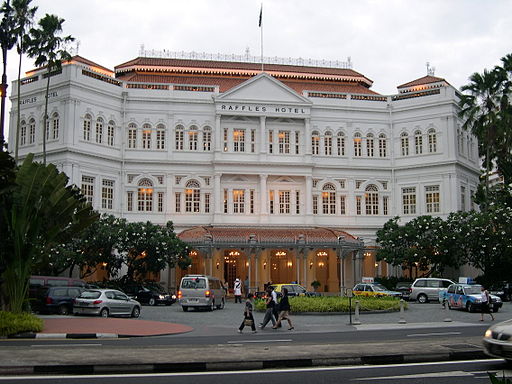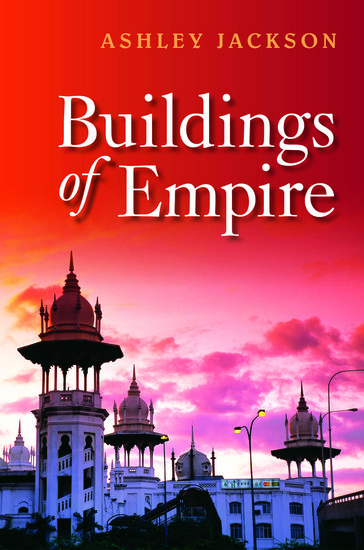By Ashley Jackson
All around the world the British built the urban infrastructure that still dominates towns and cities, as well as developing complex transport networks and the ports and railway stations that gave access to them. The Empire’s creation of cityscapes and lines of communication is easy to overlook, so much has it become part of the fabric of the world in which we live that it has been rendered unremarkable. So, too, is the impact of colonization on the natural world, the manner in which settlers and colonial states could alter land use, crop and livestock landscapes, and introduce entirely new species of flora and fauna through their botanical gardens and experimental stations. I thought it would be interesting to explore definitive themes in the history of British imperialism, using each building as a means of doing so.
Fort St Angelo, Grand Harbour, Malta
A squat medieval fort built by the Knights of St John, jutting out into Malta’s spectacular Grand Harbour, this ancient structure was taken over by the British when Malta became their main naval station in the Mediterranean. For the first century of British rule in Malta St Angelo served as an armoured redoubt in anticipation of an enemy attack on the prime naval facilities of Grand Harbour. Shortly before the First World War it was taken over by the navy and became the headquarters of the Mediterranean Fleet, rechristened HMS St Angelo, sprouting wireless masts, the tower of a new desalination plant, Bofors guns, and accommodation and office facilities for hundreds of clerks, officers, and naval ratings. Through an exploration of Fort St Angelo, the role of naval power and sea lines of communication in the history of the British Empire is explored.

At the time of its construction in the early 1980s, Sir Norman Foster’s gleaming glass and steel skyscraper was the most expensive building in the world. Employing innovative construction techniques, such as prefabrication of key components overseas before assembly in Hong Kong, and featuring giant pods hung from steel girders, it dominates Statue Square, Hong Kong’s central space looking out across Victoria Harbour towards Kowloon and the Chinese mainland. It contrasts strikingly with earlier colonial architecture and forms a central feature in the dramatic skyscraper shoreline of Hong Kong island, set against the mountainous Victoria Peak. By examining the history of the Hong Kong and Shanghai Banking Corporation (HSBC), one can discover the role of commerce and finance in the expansion of British interests in East Asia.

A colonial era classic and modern day landmark, a visit to the Raffles Hotel transports us to the world of the itinerant Europeans who traversed the Empire’s sea lanes and the lavish lifestyle of the colonials, and charts the fascinating history of this island colony-cum-nation. Despite being so redolent of the colonial period, Raffles was never a British establishment, founded by Armenians and only once in its history managed by a Briton. The Raffles story, from beachside bungalow to national icon, spans a century and a half of mixed fortunes for the entrepôt colony and latter day city-state. From its interwar peak as a world-renowned hotel and “roaring twenties” social centre for Singapore society and upcountry planters, Raffles went into decline and insolvency. Plans to knock it down and erect a skyscraper hotel in its place were developed in the 1970s, before an inspired plan to redevelop the hotel and trade on its iconic status, blending tradition, nostalgia, and modernity, was put into place.

The famous twin-towers of the Wembley Stadium demolished in 2002-03 echo the architecture of Lutyen and Baker’s New Delhi. Known until the 1970s as the Empire Stadium, it was built as the centrepiece of the 264-acre British Empire Exhibition of 1924. Erected in time to host the 1923 FA Cup Final, it gradually became the national stadium, the scene of countless cup finals and other sporting and ceremonial events. The story of Wembley encompasses the expansion of suburban London and extension of the underground railway system along the Metropolitan Line, and is linked to the development of ceremonial spaces in the city for the performance of imperial and royal events and the hosting of exhibitions. These exhibitions, dating from the Great Exhibition of 1851, became a regular feature in London, and Wembley Stadium was the centrepiece for the biggest of them all.

The British propagated educational institutions all over the world in the form of universities and schools modelled on Oxbridge and the English public school. Shortly after defeating the Mahdi’s army in 1898 and conquering the Sudan for the Empire, General Kitchener launched an appeal to raise £100,000 to found a college in memory of General Charles Gordon and in order to “civilize” the people. What emerged was a handsome building on the banks of the Blue Nile, as the British created an entirely new city, Khartoum. Running the school as a breeding ground for a British-leaning Sudanese elite proved to be more difficult, however, and the Gordon Memorial College became an incubus of nationalism. Today it is at the heart of the University of Khartoum.

Ashley Jackson is Professor of Imperial and Military History at King’s College London, and a Visiting Fellow of Kellogg College, Oxford. He is the author of numerous books and articles on the history of the British Empire, including Buildings of Empire and The British Empire: A Very Short Introduction.
Subscribe to the OUPblog via email or RSS.
Subscribe to only history articles on the OUPblog via email or RSS.
Image credits: 1) Fort S. Angelo (Birgu, Malta) seen from the Grand Harbour, by Sudika, via Wikimedia Commons 2) Statue Square, Central, Hong Kong, by Choangsoui, via Wikimedia Commons 3) Raffles Hotel, by Mat Honan, via Wikimedia Commons 4) Wembley Twin Towers, retouched by Hic et nunc, original photograph by Nick, via Wikimedia Commons 5) A view from across a street of Gordon Memorial College in 1906, copyright Travelers in the Middle East Archive (TIMEA), Identifier: 20979, via Wikimedia Commons




[…] Speaking of empire… The top five buildings of the former British Empire range from London to Sudan, Malta to Southeast […]